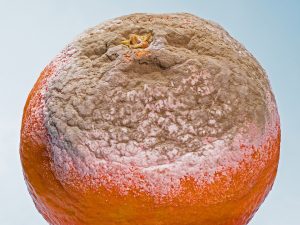Allergy issues at home? could be Mold?
February 14, 2019
Don’t let the mold panic set in just yet — it might not be as bad as you think.
Mold is everywhere. It grows on the sides of houses, it blackens surfaces like brick and concrete, and it thrives in the soil of your yard and garden.
Indoors, mold lives in sink drains, shower grout, houseplant potting mix, kitchen sponges and anywhere else that moisture has a chance to settle. Are you hyperventilating yet?
A little bit of mold is nothing to worry about, as long as you can identify the cause and promptly clean it up with a solution of bleach and water.
But before we go any further, let’s get this out of the way: Any mold, regardless of color, can make you feel sick, especially if you suffer from allergies or asthma. To be on the safe side, always wear a mask and rubber gloves when dealing with mold, and make sure that the space is well-ventilated.
Let’s get the facts straight
Also known as black mold, the infamous Stachybotrys chartarum is not toxic, but toxigenic, because it is capable of producing mycotoxins. Technicalities aside, this uncommon mold species is especially feared for its supposedly dangerous effects.
You may have read an article about how toxic mold is “secretly making your family sick” or watched local news reporters announce that black mold was found in a restaurant inspection, making it feel as if the plague arrived overnight and could be headed to your place next.
Some alternative health websites even call it “toxic mold syndrome” and warn of terrifying symptoms like memory loss or idiopathic pulmonary hemorrhage.
Officials at the Centers for Disease Control and Prevention (CDC), however, say that “These case reports are rare, and a causal link between the presence of the toxigenic mold and these conditions has not been proven. … All molds should be treated the same with respect to potential health risks and removal.”
Stachybotrys chartarum is unusual among household molds, because it requires constant moisture to survive. So if your house is oozing moisture from a roof leak, broken pipe or outright poltergeist, black mold is the least of your worries. Time to call a professional and put an end to the drip before termites or wood rot threaten to put an end to your home’s structure.
Mold is often a symptom of a bigger problem, be it as minor as a dripping faucet or as major as, well, a missing roof.
If you suspect that the slowly spreading black stain on your wall is the infamous black mold, don’t bother wasting your time identifying the stuff. Scam artists abound, and the Environmental Protection Agency even says that “In most cases, if visible mold is present, sampling is unnecessary.”
There are no established standards for judging what is an acceptable amount of mold, and even the non-toxigenic types can cause allergic reactions and make your life miserable. Remove it.
How to prevent and remove mold
Mold needs three things to survive: Moisture, a growing surface and food (dirty stuff).
The easiest way to prevent mold is to make sure that it never gets any moisture to begin with. Keep your house clean, dry and well-ventilated, especially in the bathroom wherever water collects, such as on tile grout or shower curtains. If your bathroom has gnats or a damp odor, look no further than your clogged sink drains — and be sure to wear some rubber gloves.
To clean and remove mold on hard surfaces, the CDC recommends using a solution of no more than one cup of bleach to one gallon of water.
To remove mold on exterior surfaces, use a pressure washer, and make sure that everything is properly sealed.
If mold is found on soft and porous surfaces, such as drywall, carpeting or furniture, it’s best to dispose of the affected material before the mold spreads further or exacerbates your allergies.
Flood-damaged homes with heavy mold infestations should be handled by professionals whenever possible. The Federal Emergency Management Agencywarns that “Infants, children, immune-compromised patients, pregnant women, individuals with existing respiratory conditions (allergies, multiple chemical sensitivity and asthma) and the elderly appear to be at higher risks for adverse health effects from mold.”
In addition, flood-damaged houses are often contaminated with chemicals and human waste, which are far more dangerous than the mold itself.
see original at https://www.zillow.com/blog/the-truth-about-toxic-mold-229445/